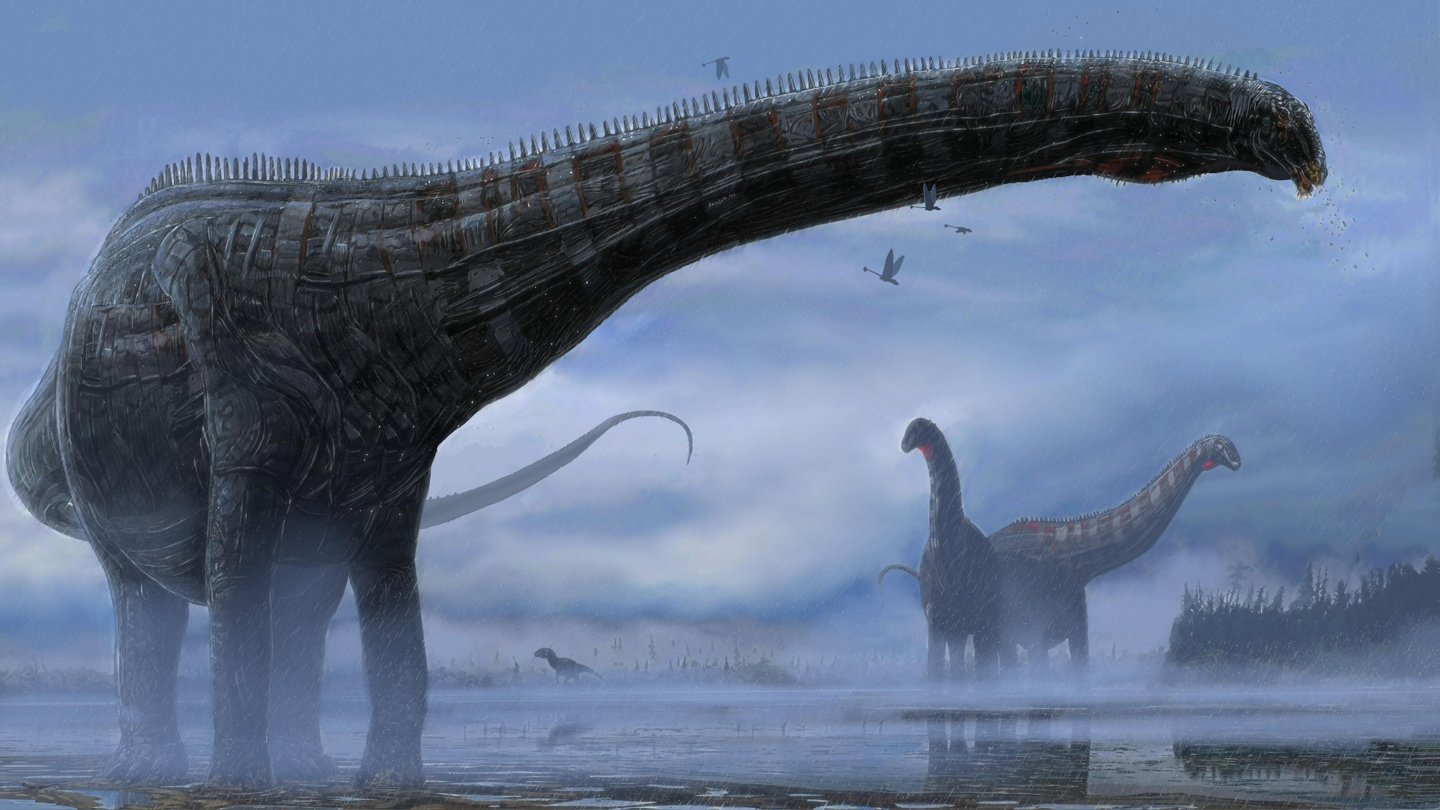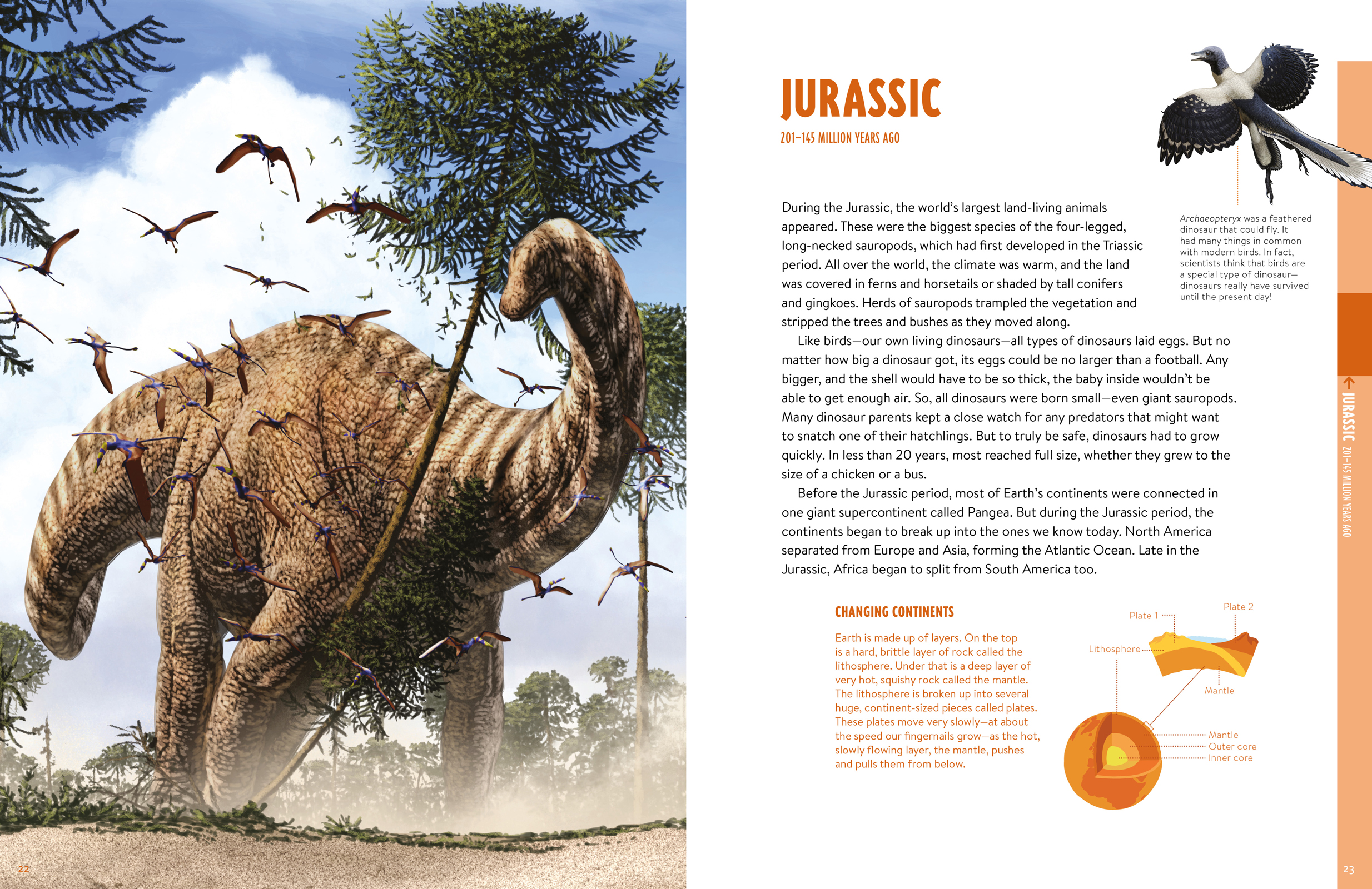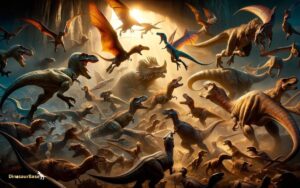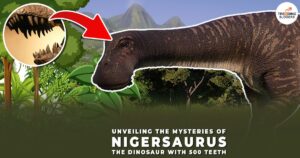Are Dinosaurs Millions of Years Old? Unveiling the Truth!
Dinosaurs are indeed millions of years old. Scientific evidence places their existence between 230 and 65 million years ago.
Understanding the age of dinosaurs is crucial not only for paleontology but for unraveling Earth’s ancient history. Fossils serve as the primary evidence, with radiometric dating confirming their age. These magnificent creatures roamed the Earth during the Mesozoic Era, which is divided into three periods: the Triassic, Jurassic, and Cretaceous.
Paleontologists have been able to reconstruct their environments, behaviors, and eventual demise through extensive research and fossil analysis. The fascination with these prehistoric titans stems from their size, diversity, and the mystery of their extinction. This interest fuels ongoing studies, yielding insights into life’s evolution and Earth’s geological past. Our current understanding of dinosaurs as ancient beings shapes the foundation of prehistoric biological sciences.

Credit: www.snexplores.org

The Fascination With Dinosaurs
The allure of dinosaurs takes us back millions of years. These grand creatures ignite the imagination of both the young and old. Their enormous size, diverse species, and mysterious extinction captivate us all. Dinosaurs are more than ancient bones; they are gateways to a prehistoric world.
Cultural Impact Through History
Dinosaurs have left a lasting impact on culture across the globe. They appear in books, movies, and art, often symbolizing power and mystery.
- Early literature played with the idea of living dinosaurs.
- Film classics like “Jurassic Park” introduced realistic dinosaurs to the masses.
- Museums showcase dinosaur recreations sparking curiosity.
Scientific Significance In Paleontology
Dinosaurs are paleontology’s cornerstones, offering clues about life’s evolution. These ancient beasts help scientists understand the Earth’s ecological and geographical changes.
- They demonstrate evolutionary biology principles.
- Dinosaur fossils reveal information about prehistoric climate.
- Extinction theories are refined by studying dinosaurs.
Dating Dinosaurs: Methods And Techniques
Many kids and adults alike are fascinated by dinosaurs. Yet the question remains: How do scientists know dinosaurs are millions of years old? To answer this, experts use specific dating methods and techniques. These tools help unravel the ancient history of these incredible creatures.
Radiometric Dating Explained
Radiometric dating is like a clock within rocks. It measures how old rocks are around dinosaur fossils. Here’s how it works:
- Atoms in rocks break down over time. This is called radioactive decay.
- Scientists measure the decay of radioactive elements like carbon-14 or uranium-238.
- The rate of decay is steady and known. It acts as a natural timer.
- By counting the remaining radioactive atoms, scientists can say when the rock formed.
Stratigraphy And Its Role In Determining Age
Stratigraphy is another tool for dating dinosaur remains. It examines layers of rocks, called strata. These layers hold clues to the past:
- Earth’s history is recorded in sequential layers.
- Dinosaur fossils appear in certain layers that tell their age.
- The deepest layers are often the oldest. Higher layers are newer.
- Scientists ascribe dates to layers using radiometric dating.
These methods, when combined, give a reliable age for dinosaur fossils. This helps us understand when these giants roamed the Earth.
Evidences Supporting The Age Of Dinosaurs
Dinosaurs roamed the Earth long before humans. Scientists work hard to understand when. They look at rocks and bones to learn. This helps us know about our planet’s history. Let’s explore the strong proof of dinosaurs’ age.
Fossil Records And Geological Findings
Dinosaurs left many clues behind. These clues are fossil records. Fossils are old bones turned into stone. We find fossils in layers of rock. The deeper the rock layer, the older it is. Scientists use a method called radiometric dating. This tells us how old rocks and fossils are. They find dinosaur bones can be 65 million to 250 million years old!
- Rock layers – like pages in history books
- Radiometric dating – Earth’s clock to measure time
- Paleontology – the study of ancient life through fossils
Comparative Analysis With Other Prehistoric Life
To know dinos’ age, scientists compare them too. They look at other prehistoric creatures. This helps us see how life changed over time. Dinosaurs had neighbors like ammonites and trilobites. These creatures lived at different times. By knowing when they lived, we can tell dinosaur timelines better.
| Life Form | Existed |
|---|---|
| Trilobites | 520 million years ago |
| Ammonites | 400 million years ago |
| Dinosaurs | 230 million years ago |
By studying all life forms, scientists build a big timeline. They see that dinosaurs are indeed old, millions of years old.

Credit: www.npr.org
Challenging The Timeline: Alternative Theories
The age of dinosaurs has always sparked lively debates.
Most scientists agree that these colossal creatures roamed the Earth millions of years ago. However, not everyone views the timeline of dinosaurs through the same lens. This section delves deep into some thought-provoking alternatives that challenge the well-accepted dinosaur chronology.
Young Earth Creationism Perspective
Young Earth creationists hold a different view on dinosaur timelines. They argue that dinosaurs lived much more recently, alongside humans. This belief mainly rests on religious texts, which suggest a younger age for the Earth and all of its inhabitants, including dinosaurs.
Controversies In Dinosaur Dating
Within the scientific community, dinosaur dating is complex and multi-layered.
Despite advanced techniques such as radiometric dating, results can sometimes present conflicting information. This spurs ongoing discussions about the accuracy of our current methods and interpretations.
| Method | Detail | Controversial Aspects |
|---|---|---|
| Radiometric Dating | Uses decay of radioactive isotopes | Assumptions about initial conditions |
| Stratigraphy | Analysis of rock layers | Varied sedimentation rates |
| Palaeomagnetic Dating | Looks at Earth’s magnetic field changes | Magnetic field reversals timing |
Different schools of thought often scrutinize these methods. For instance, some argue that past catastrophic events could drastically change initial conditions, leading to inaccurate results. Others question the reliability of the rate of radioactive decay over millions of years. These controversies keep the debate on the age of dinosaurs very much alive.
The Impact Of New Discoveries On Age Estimates
The relentless pursuit of the unknown has forever altered our understanding of the ancient world. Dinosaur age estimations have been particularly affected by groundbreaking discoveries. These leaps in knowledge not only challenge our perceptions but also refine the methods scientists use to determine the age of these majestic creatures.
Recent Paleontological Breakthroughs
New fossil finds continue to reshape the dinosaur timeline. Scientists unearth remnants that provide clues about the lives of dinosaurs. Each discovery acts like a puzzle piece, helping to complete the grand picture of the past. Recent finds have unveiled specimens unknown to science, offering fresh insights into dinosaur behavior and evolution.
- Better-preserved skeletons
- Previously undiscovered species
- Insights into dinosaur growth patterns
How Technology Is Refining Age Assessments
Innovations in technology grant paleontologists new tools to date fossils with increased accuracy. Methods like radiometric dating and stratigraphic analysis rely on sophisticated equipment to analyze geological and chemical clues. These modern techniques yield precise age estimates, solidifying the time frame of when dinosaurs roamed the Earth.
| Technology | Application |
|---|---|
| CT Scans | Examining internal structures without damage |
| Mass Spectrometry | Measuring isotopic composition |
| 3D Modeling | Recreating fossils and habitats digitally |

Credit: www.whatonearthbooks.com
Educational And Social Implications Of Dinosaur Age
Dinosaurs capture the imagination, presenting a world vastly different from our own. But it’s not just about giant reptiles roaming the earth; the age of dinosaurs holds significant weight in education and society.
Influence On Science Curricula
Understanding dinosaur age is crucial for students. It helps them grasp concepts like:
- Earth’s history and the development of life
- Geological processes shaping our planet
- Evolutionary biology through studying ancient creatures
Public Perception Of Prehistoric Timelines
Dinosaur age can also shape how people see their place in history and nature. Popular media often highlights dinosaurs as ancient, powerful beings. This influences public opinions about:
- Longevity and change on Earth
- Humans in relation to other species
- Cultural representation of prehistoric life
Frequently Asked Questions On Are Dinosaurs Millions Of Years Old
Are Dinosaur Bones Millions Of Years Old?
Yes, dinosaur bones are typically millions of years old, often dating back 65 to 230 million years.
Did Dinosaurs Existed Millions Of Years Ago?
Yes, dinosaurs existed on Earth millions of years ago. They first appeared roughly 230 million years back during the Triassic period.
Does The Bible Say About Dinosaurs?
The Bible does not specifically mention dinosaurs. The texts predate modern understanding of these ancient creatures by several millennia.
How Old Really Are Dinosaurs?
Dinosaurs first appeared around 230 million years ago during the Triassic period. They became extinct about 66 million years ago at the end of the Cretaceous period.
Conclusion
Wrapping up our prehistoric inquiry, it’s clear that dinosaurs reigned long before us. Geological evidence and carbon dating confirm their existence spans back millions of years. As we unravel Earth’s ancient chapters, these fascinating creatures continue to ignite our imagination and deepen our understanding of the planet’s history.
Keep exploring, and stay awed by the mysteries time holds.



